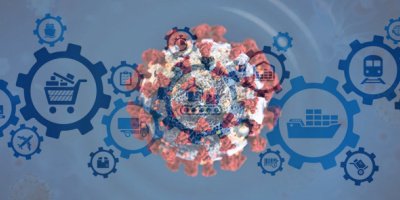The computer giant packed the announcement with many new and enhanced products, including the following:
- The iSeries Model 890, a 32-way POWER4 server that offers up to 1.85 times the performance of a 24-way Model 840
- New processor features for the iSeries Models 830 and 840 that offer greater value and flexibility
- A new release of OS/400 that significantly extends the systems management capabilities of the iSeries and positions it to support additional workloads
Regatta Sails on the iSeries
The undisputed centerpiece of IBM's announcement is the iSeries Model 890, a server that packs anywhere from 16 to 32 POWER4 processors running at 1.3Ghz. The i890 resides in the same refrigerator-sized frame as its UNIX-based fraternal twin, the pSeries Model 690 "Regatta" and offers twice the I/O and memory capacity of the iSeries Model 840.
The iSeries Model 890--Specifications
Processor Type: POWER4
Clock Speed: 1.3Ghz
Number of CPUs: 16 to 32
Performance Range (in CPWs): 29,300 - 37,400
Maximum Memory: 256GB
DASD Capacity: 72TB
# of LPARs Supported: 32
Maximum # of xSeries Adapters Supported: 32
General Availability Date: 6/14/02
One unusual aspect of the i890 is that it comes in two different configurations: base models and standard models. As those of you who own Model 270s and 820s know, base models lack the ability to run interactive "green-screen" workloads, while standard models can run interactive workloads based on the interactive CPW processor feature that the customer orders. IBM is now extending these configuration options to the i890 and, as I shall explain later, to the i830 and i840 as well.
When the i890 begins shipping in mid-June, it will do so ahead of the general availability date for the operating system it requires for support: OS/400 V5R2. Since V5R2 won't officially ship until sometime in August, early i890 shipments will go out with an "English only" early version of the new release. It will be interesting to see whether iSeries customers will trust their applications to an OS/400 release that, in all likelihood, will still be undergoing field tests when the i890 starts shipping.
While IBM has not yet provided analysts with any details, I've also learned that i840 servers will be upgradeable to the i890 and that the i840 serial numbers will be preserved in the upgrade. Normally, such "forklift upgrades" to an entirely different server frame and backplane are not eligible under tax laws for serial number protection. Remarkably, IBM has managed to keep that eligibility, which extends important tax accounting and depreciation benefits to i840 customers.
New Twists on Old Servers
As I mentioned, IBM is taking the base model configurations found on the i270 and i820 and extending them to not only the i890, but the i830 and i840 as well. Previously, i830 and i840 customers had to order an "interactive CPW feature code" that made some of their CPU capacity available to green-screen applications. Now, they can order an 8-way i830, a 12-way i840, or a 24-way i840 with no interactive CPWs. (IBM is also offering 24-way and 32-way i890s without interactive CPWs.) As this issue is going to press, IBM has not yet provided prices for these new performance options. However, for customers who need no interactive horsepower, these base configurations will likely cost less than comparable standard configurations.
Besides offering base versions of the i830 and i840, IBM is providing configurations of these models that include Capacity Upgrade on Demand (CUoD) as a standard feature. In principle, this means that IBM will charge customers only for the capacity they are using and will not charge an up-front premium (as is done currently) for ordering standby capacity. For example, let's say that you buy an i830 with a 4/8-way processor feature (which contains four active and four standby processors) and only use the four CPUs that are initially active. According to IBM, you'll pay the same price for this feature as you would for the current 4-way processor feature. Thus, you'll pay nothing for the standby processors until you activate them.
The following table shows the new lineup of base and standard configurations for the i830, i840, and i890. As this article goes to press, it is not clear whether IBM will withdraw i830 and i840 processor features not shown in this table. Hopefully, the announcement letters that IBM is releasing today will make this clear.
Base and Standard Configurations of the i830, i840, and i890 |
|||
|
Model
|
# of Active CPUs
|
# of Standby CPUs
|
CPW Rating (Includes Standby CPUs)
|
|
i830 Base
|
8
|
N/A
|
7,350
|
|
i830 Standard
|
2
|
N/A
|
1,850
|
|
i830 Standard (4/8)
|
4
|
4
|
7,350
|
|
i840 Base
|
12
|
N/A
|
12,000
|
|
i840 Base
|
24
|
N/A
|
20,200
|
|
i840 Standard (8/12)
|
8
|
4
|
12,000
|
|
i840 Standard (12/18)
|
12
|
6
|
16,500
|
|
i840 Standard (18/24)
|
18
|
6
|
20,200
|
|
i890 Base
|
24
|
N/A
|
29,300
|
|
i890 Base
|
32
|
N/A
|
37,400
|
|
i890 Standard (16/24)
|
16
|
8
|
29,300
|
|
i890 Standard (24/32)
|
24
|
8
|
37,400
|
As you will note from the table, CUoD is only available on the standard models. In other words, you can get standby processors for no initial charge, but you will need to pay for an interactive processor feature if you do so. Personally, I believe IBM should extend CUoD as a standard feature to at least some of the larger base models. If you want this option, be sure to tell IBM about it.
OS/400 V5R2: Systems Management on Steroids
As today's announcement makes clear, IBM intends to deliver mainframe-class performance and systems management capabilities on the iSeries while preserving the server's simplicity and ease of use. To that end, OS/400 V5R2 offers plenty of new management functionality that administrators can largely control through an expanded palette of tools within iSeries Navigator. Among the many new features in V5R2, here are the highlights.
- Availability enhancements--Users with multiple iSeries servers will welcome V5R2's ability to create multiple independent DB2 UDB databases within each server, then switch those databases between servers using the independent auxiliary storage pool (IASP) feature of OS/400. In V5R1, users could only perform IASP disk switching for files stored in the Integrated File System (IFS); under V5R2, this capability is extended to DB2 files. The new release also includes enhancements to speed up restarts of clustered systems and reduce downtime due to disk upgrades.
- Capacity and performance management--For years, OS/400 has included a transaction processing monitor (TPM) that optimizes the performance of single-threaded database transactions generated by traditional AS/400 applications. With V5R2, IBM is giving that TPM a name--Adaptive e-transaction Services--and enhancing it so that it can also optimize the performance of multi-threaded Java applications. The expanded TPM facility automatically detects the type of application and optimizes the transaction without programmer intervention. Users should get additional performance boosts from the Web caching accelerator IBM is adding to the Apache Web server as well as a Secure Sockets accelerator for transactions that invoke SSL services.
- Security management--As anticipated, V5R2 will include Enterprise Identity Mapping (EIM), a facility that ties all of an enterprise's systems to a single directory for user identification, authentication, and access control. Through EIM, IBM intends to simplify and reduce the cost of security management while making it easier to develop multi-tier, multi-server applications. Under V5R2, the iSeries can act as a domain controller for the EIM directory.
- Windows server management--While IBM has been short on details in this area, V5R2 will offer some form of support for Microsoft Cluster Services that will allow the iSeries to switch storage spaces (presumably within the IFS) between Windows servers in the case of an outage. The new OS/400 release also supports the creation of high-speed Virtual Ethernet links between Windows servers and OS/400 LPARs. It is not yet clear whether this feature is solely intended for Integrated xSeries Servers or includes external Windows servers. With V5R2, companies can also use the Integrated xSeries Adapter to establish bus-level connections between the iSeries and IBM's newest xSeries servers, the x360 and x440.
- LPAR enhancements--Companies running Linux in LPARs will be glad to know that V5R2 supports dynamic reallocation of LPAR resources in Linux partitions. Under V5R1, administrators had to manually resize Linux LPARs and restart them for the changes to take effect. In other developments, WebSphere users will welcome IBM's plans to offer LPAR-based capacity pricing for WebSphere Application Server and WebSphere Commerce Suite. This could significantly reduce license costs for these products. Also, look for V5R2 to offer significantly enhanced tools for LPAR management within the iSeries Navigator interface.
- New Linux features--While we're discussing LPARs, be aware that V5R2 LPARs will support 64-bit implementations of Linux that utilize the operating system's Version 2.4 kernel. On another front, Symantec has announced that it will offer a firewall product that runs within an iSeries Linux LPAR. And in a statement of direction, IBM announced its intention to support DB2 UDB and WebSphere Application Server within Linux LPARs at some future date. For further observations on this last announcement, read the article I wrote on the topic several weeks ago.
- AIX affinity--In an announcement that iSeries insiders have long anticipated, IBM stated its intent via a statement of direction to offer native support for the AIX 5L operating system running on iSeries LPARs. Based on information from my sources, I anticipate that IBM will deliver this support on OS/400 V5R3 sometime next year. In the meantime, users of V5R2 are getting a new version of the Portable Application Solutions Environment (PASE) that is based on a runtime version of AIX 5L. Previous PASE releases are based on AIX 4.3.3. I'll say more about the implications of these announcements in a moment.
- Wireless enablement--The new OS/400 release also supports tools to help build and manage wireless applications on the iSeries. A new IBM Toolbox for Java 2 Micro Edition provides Java classes and a JDBC Micro Edition driver for wireless access to iSeries data from remote and mobile clients. There's also a new facility called iSeries Access for Wireless, a middleware package that will enable iSeries systems management from wireless devices.
Beyond the enhancements discussed above, IBM's announcement letters will be full of details about other V5R2 technologies, including DB2 UDB support for the Java Transaction API, self-guided wizards for disk configuration, and support for IPv6 networks. While some of these enhancements may ship on different dates, the vast bulk of them will become available in the August time frame.
A Break from the Past...A Gateway to the Future
If you're getting the sense that this announcement somehow has a different "look and feel" than previous announcements, your intuition is on target. This announcement is different, and that difference speaks volumes about where the iSeries server is headed.
The first big difference is that IBM is only announcing a high-end server with POWER4 processors. Historically, the computer giant has rolled out "top to bottom" revamps of all iSeries models in its announcements. This change is no accident. According to my IBM sources, we can expect to see iSeries announcements become more like those of the pSeries group, which introduces the fastest CPUs on high-end systems, then "cascades" those processors down to smaller servers over time. You can see this integration of the two servers' announcement strategies in IBM's choice of model numbers for its two 32-way POWER4 servers: iSeries 890 versus pSeries 690. Following this logic, we could see future POWER4-based iSeries models with numbers that mirror those of other pSeries servers, such as an 8-way i860 or a 4-way i820. IBM will likely announce such POWER4-based iSeries models on or about the same date as it announces similar POWER4 versions of its pSeries family. These announcements will increasingly focus more on the technologies that are common to the two eServer families and less on the features that distinguish them from each other.
This leads to my second observation: the simple fact that the technologies that are common to both eServer families is growing. Today, around 95 percent of iSeries and pSeries hardware is common. Through Project eLiza, the systems management platforms are increasingly drawn from a common pool of components. In the development arena, both servers share the same suite of Java-based tools and middleware. Now, with IBM promising native support for AIX on LPARs, we stand on the threshold of a world where the two servers will even share the entire portfolio of AIX applications.
Clearly, these changes can make the iSeries more attractive to new customers. However, the iSeries to which they'll be attracted isn't the AS/400 upon which we built our careers. It will be a far more flexible and powerful server that will support a dizzying array of workloads drawn from four operating systems--OS/400, Linux, AIX, and Windows--through a single management environment. It is this "flexible eServer" that IBM intends to market aggressively in the years to come. And while it won't be the AS/400 that many customers hoped IBM would promote, it will include the AS/400 and offer new users the power, integration, and robust applications support of the environment we know and love.
In short, don't mourn the passing of the old AS/400. With this announcement, IBM is demonstrating that AS/400 technologies and the values that inspired them will live on in a server that can gain the allegiance of a much wider IT community.
Lee Kroon is a Senior Industry Analyst for Andrews Consulting Group, a firm that helps mid-sized companies manage business transformation through technology. You can reach him at






















 More than ever, there is a demand for IT to deliver innovation. Your IBM i has been an essential part of your business operations for years. However, your organization may struggle to maintain the current system and implement new projects. The thousands of customers we've worked with and surveyed state that expectations regarding the digital footprint and vision of the company are not aligned with the current IT environment.
More than ever, there is a demand for IT to deliver innovation. Your IBM i has been an essential part of your business operations for years. However, your organization may struggle to maintain the current system and implement new projects. The thousands of customers we've worked with and surveyed state that expectations regarding the digital footprint and vision of the company are not aligned with the current IT environment. TRY the one package that solves all your document design and printing challenges on all your platforms. Produce bar code labels, electronic forms, ad hoc reports, and RFID tags – without programming! MarkMagic is the only document design and print solution that combines report writing, WYSIWYG label and forms design, and conditional printing in one integrated product. Make sure your data survives when catastrophe hits. Request your trial now! Request Now.
TRY the one package that solves all your document design and printing challenges on all your platforms. Produce bar code labels, electronic forms, ad hoc reports, and RFID tags – without programming! MarkMagic is the only document design and print solution that combines report writing, WYSIWYG label and forms design, and conditional printing in one integrated product. Make sure your data survives when catastrophe hits. Request your trial now! Request Now. Forms of ransomware has been around for over 30 years, and with more and more organizations suffering attacks each year, it continues to endure. What has made ransomware such a durable threat and what is the best way to combat it? In order to prevent ransomware, organizations must first understand how it works.
Forms of ransomware has been around for over 30 years, and with more and more organizations suffering attacks each year, it continues to endure. What has made ransomware such a durable threat and what is the best way to combat it? In order to prevent ransomware, organizations must first understand how it works. Disaster protection is vital to every business. Yet, it often consists of patched together procedures that are prone to error. From automatic backups to data encryption to media management, Robot automates the routine (yet often complex) tasks of iSeries backup and recovery, saving you time and money and making the process safer and more reliable. Automate your backups with the Robot Backup and Recovery Solution. Key features include:
Disaster protection is vital to every business. Yet, it often consists of patched together procedures that are prone to error. From automatic backups to data encryption to media management, Robot automates the routine (yet often complex) tasks of iSeries backup and recovery, saving you time and money and making the process safer and more reliable. Automate your backups with the Robot Backup and Recovery Solution. Key features include: Business users want new applications now. Market and regulatory pressures require faster application updates and delivery into production. Your IBM i developers may be approaching retirement, and you see no sure way to fill their positions with experienced developers. In addition, you may be caught between maintaining your existing applications and the uncertainty of moving to something new.
Business users want new applications now. Market and regulatory pressures require faster application updates and delivery into production. Your IBM i developers may be approaching retirement, and you see no sure way to fill their positions with experienced developers. In addition, you may be caught between maintaining your existing applications and the uncertainty of moving to something new. IT managers hoping to find new IBM i talent are discovering that the pool of experienced RPG programmers and operators or administrators with intimate knowledge of the operating system and the applications that run on it is small. This begs the question: How will you manage the platform that supports such a big part of your business? This guide offers strategies and software suggestions to help you plan IT staffing and resources and smooth the transition after your AS/400 talent retires. Read on to learn:
IT managers hoping to find new IBM i talent are discovering that the pool of experienced RPG programmers and operators or administrators with intimate knowledge of the operating system and the applications that run on it is small. This begs the question: How will you manage the platform that supports such a big part of your business? This guide offers strategies and software suggestions to help you plan IT staffing and resources and smooth the transition after your AS/400 talent retires. Read on to learn:
LATEST COMMENTS
MC Press Online